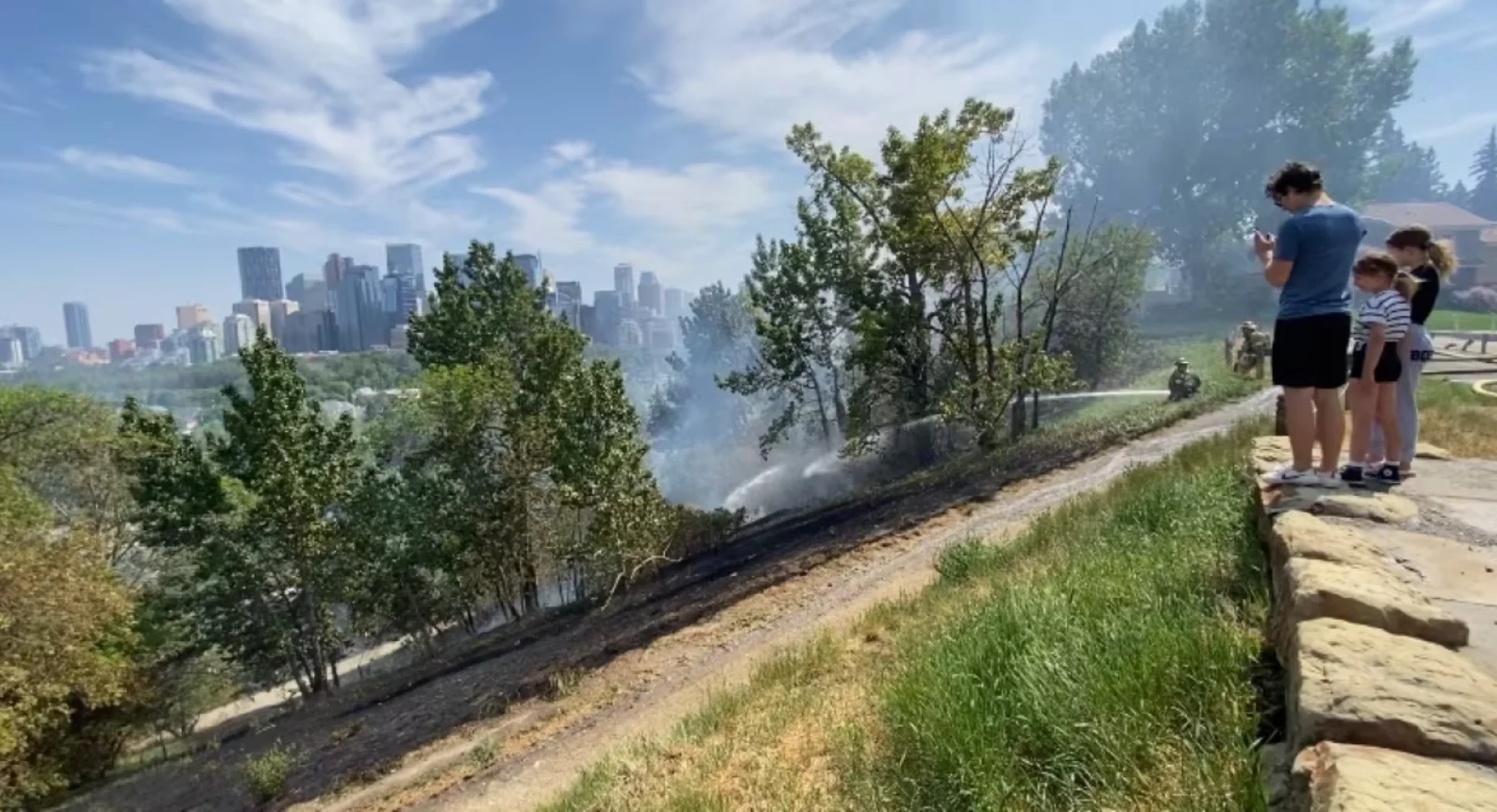
Is Calgary seeing more grass fires than usual? Yes, says fire chief
Visit The Weather Network's wildfire hub to keep up with the latest on the active start to wildfire season across Canada.
Seeing this many grass fires isn't normal, according to Calgary Fire Chief Steve Dongworth.
Fire service calls for grass and brush fires have increased both in the inner city and on Calgary's outskirts.
"If you take this year to June 11th and you compare it with the last five years, we're now seeing about three times as many fires in the urban area and actually the rural area of the city than we were in 2019," Dongworth said.
Since the beginning of this year, Dongworth said fire crews have responded to 164 wildland grass fires in the inner city, at least a dozen in the city outskirts.
Calgary has had weeks of perfect conditions for these fires to break out: it's hot, there hasn't been enough rain and any flame or spark with a gust of wind can rip through all that dry vegetation.
"We're all wishing for some rain, for sure, to kind of change this pattern," Dongworth said.
WATCH: Tips to help protect yourself from wildfire smoke
RELATED: Alberta smashes annual wildland burned record in mid-June
That shift could finally be on its way, according to Environment and Climate Change Canada.
Meteorologist Danielle Desjardins said the immediate forecast is calling for an unsettled pattern, which will bring rain. In Calgary, she expects to see precipitation peak Wednesday.
So far this month, Desjardins said, Calgary has only seen a couple millimetres of rain, with many wondering where the usual June monsoon is.
"We are behind, well behind the average for this year," Desjardins. "Usually we do get at least a thunderstorm or two every couple days."
WATCH: New study reveals how wildfire smoke affects pregnancy
RELATED: In the wake of wildfires, forests’ ability to trap carbon 'goes up in smoke'
This incoming system, she added, is the best chance for rain the city has seen in some time.
One of the beautiful things about this city, Dongworth said, is the parkland. But it's a danger, too. Especially with the number of people and infrastructure around.
"Certainly housing and that's the biggest challenge, right. We have to stop those fires before they threaten housing or industry or whatever," Dongworth said. "Of course we're very focused on that."
When the city sees what's called crossover — temperatures reaching 30 degrees, with a relative humidity of 30 per cent or less and wind gusts of 30 kilometres per hour — the fire department calls resources in, sometimes on overtime, in case of fire.
Dongworth said that's when fire behaviour is a concern.
"When you have all those three factors come into play, if you do have a fire, well a fire is more likely to start, but also it's more likely to be severe and exhibit extreme behaviour because you've achieved that crossover point," said the chief.
While Dongworth has regular meetings and discussions on fire restrictions and fire bans, Dongworth said he's confident calling one now wouldn't slow down the rash of grass fires.
"It would be more of a symbolic thing," Dongworth said.

Firefighters battled a blaze burning north of Calgary's downtown on June 5 after it came close to homes and threatened properties and vehicles in the area. (Elizabeth Withey/CBC)
RELATED: How climate change ‘loads the dice’ for severe wildfire seasons in Canada
Instead he's reminding Calgarians to be careful.
Grass fires still make up a small fraction of calls the departments handles. For context, Dongworth said so far this year crews responded to thousands of medical calls.
"Our service is becoming increasingly stressed," Dongworth said. "Council have responded to that with a significant investment in the Calgary Fire Department over the next four years … I think we're seeing all the reasons why that was the right thing to do at this time."
WATCH: Top 5 ways humans cause forest fires in North America
This article, written by Helen Pike, was originally published for CBC News.









